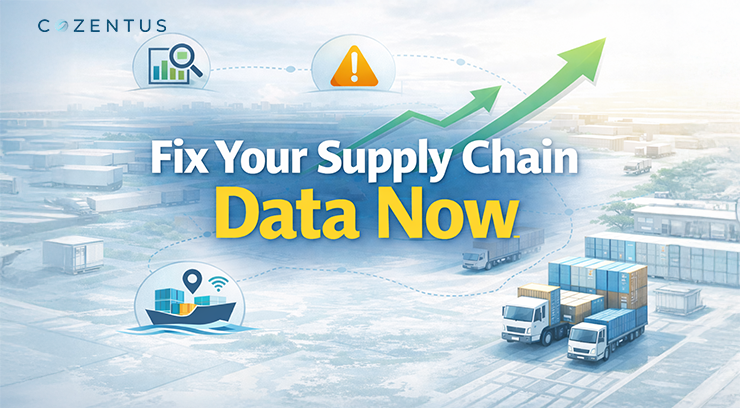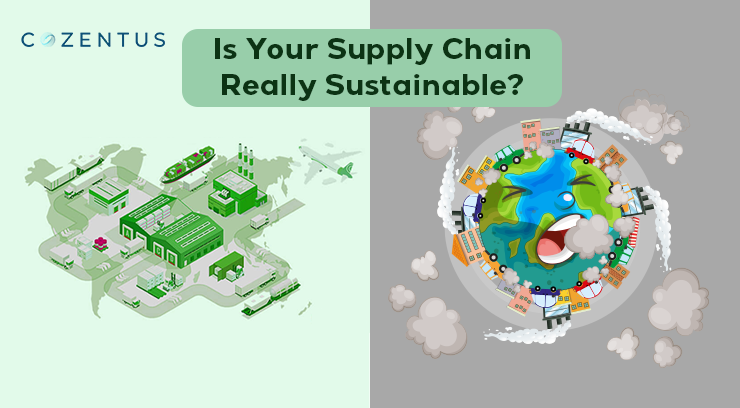Managing a supply chain has become more challenging in today's rapidly evolving business world. Multiple factors can impact the performance of a supply chain, including demand fluctuations, market conditions, transportation issues, and many others. To mitigate these risks, companies are investing in supply chain visibility solutions, ETA logistical solutions, real-time supply chain visibility, demand forecasting, supply chain management, and supply chain management software.
One critical aspect of supply chain management is testing. Testing evaluates a product, system, or service against predefined standards or requirements to ensure quality and functionality. In traditional testing, testers manually perform various tests to identify defects or issues in the product. However, with technological advancements, testing as a Service (TaaS) has emerged as a new testing approach that can help improve supply chain management.
What exactly is TaaS?
TaaS is a cloud-based testing model that allows companies to access testing services on demand. With TaaS, companies can leverage the expertise of testing professionals, use the latest testing tools, and reduce the cost and time associated with traditional testing. In this article, we will discuss the advantages and disadvantages of TaaS and standard testing for supply chain management.
Advantages of TaaS for Supply Chain Management
Cost-Effective: One of the significant advantages of TaaS is its cost-effectiveness. Traditional testing requires a considerable amount of time, effort, and resources. In contrast, TaaS allows companies to pay only for the services they use, making it more cost-effective.
According to a report by Research and Markets, the global testing as a service market size is expected to grow from $1.5 billion in 2020 to $6.2 billion by 2025 at a Compound Annual Growth Rate (CAGR) of 32.9% during the forecast period. This growth can be attributed to the cost-effectiveness of TaaS.
Scalability: Another advantage of TaaS is its scalability. Traditional testing makes it difficult to scale up or down based on business needs.
Faster Testing: TaaS can help improve the speed of testing. With traditional testing, testers must set up the testing environment, configure the tools, and perform various tests manually.
Access to Expertise: TaaS allows companies to access the expertise of testing professionals without investing in their training and development.
Disadvantages of TaaS for Supply Chain Management
Security Concerns: One of the significant concerns of TaaS is security. Since TaaS involves sharing the testing environment and data with a third-party provider, there is a risk of data breaches and cyber-attacks.
Limited Control: With TaaS, companies have limited control over the testing process. Since a third-party provider performs the testing, companies must rely on their expertise and testing process.
Advantages of Traditional Testing for Supply Chain Management
More Control: Traditional testing allows companies more control over the testing process. They can set up the testing environment, configure the tools, and perform various tests per their requirements.
Better Security: Traditional testing allows companies to have better security since they can keep their testing environment and data in-house. It reduces the risk of data breaches and cyber-attacks.
More Customization: Traditional testing allows companies to customise the testing process per their specific requirements. They can use their own testing tools, frameworks, and methodologies.
Disadvantages of Traditional Testing for Supply Chain Management
Cost and Time-Consuming: Traditional testing can be costly and time-consuming. It requires significant resources, including hardware, software, and testing professionals.
Limited Scalability: Traditional testing has limited scalability. Companies must invest additional hardware and software resources to scale up the testing process. It can be expensive and time-consuming.
TaaS vs Traditional Testing: Which is Better for Supply Chain Management?
When it comes to supply chain management, both TaaS and traditional testing have their advantages and disadvantages. TaaS is cost-effective, scalable, and can improve the speed of testing. However, it has security concerns and limited control over the testing process. On the other hand, traditional testing provides more power, better security, and more customisation.
Therefore, companies must consider their specific requirements and objectives before choosing the testing approach. For instance, if the company has limited resources and needs to perform testing quickly, TaaS can be a good option. On the other hand, if the company has complex testing requirements and needs to ensure better security and control over the testing process, traditional testing may be a better option.
Bottom Line
Supply chain management is a complex and challenging process that requires a comprehensive approach. Investing in supply chain visibility solutions, ETA logistical solutions, real-time supply chain visibility, demand forecasting, supply chain management, and supply chain management software can help improve the performance of the supply chain. Additionally, choosing the right testing approach, either TaaS or traditional testing, can help ensure the quality and functionality of the product.
If you are looking for a reliable partner to help you implement a customised TaaS solution for your supply chain management, Cozentus is here to help. Our team of experts can work with you to understand your specific requirements and develop a tailored TaaS solution that meets your needs. Contact us today to learn more about our TaaS software and supply chain visibility solutions for efficient management.
Recent Post
Subscribe to our newsletter
Stay updated on latest trends and news in the supply chain and logistics industry








